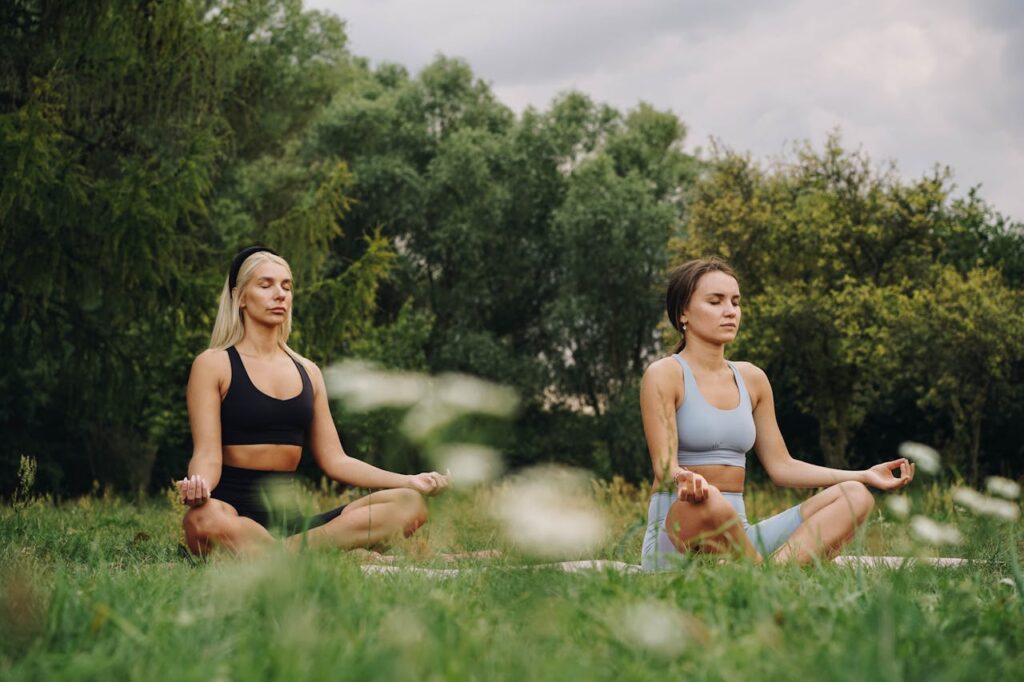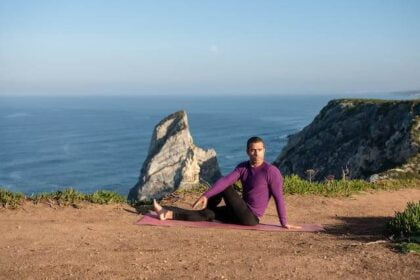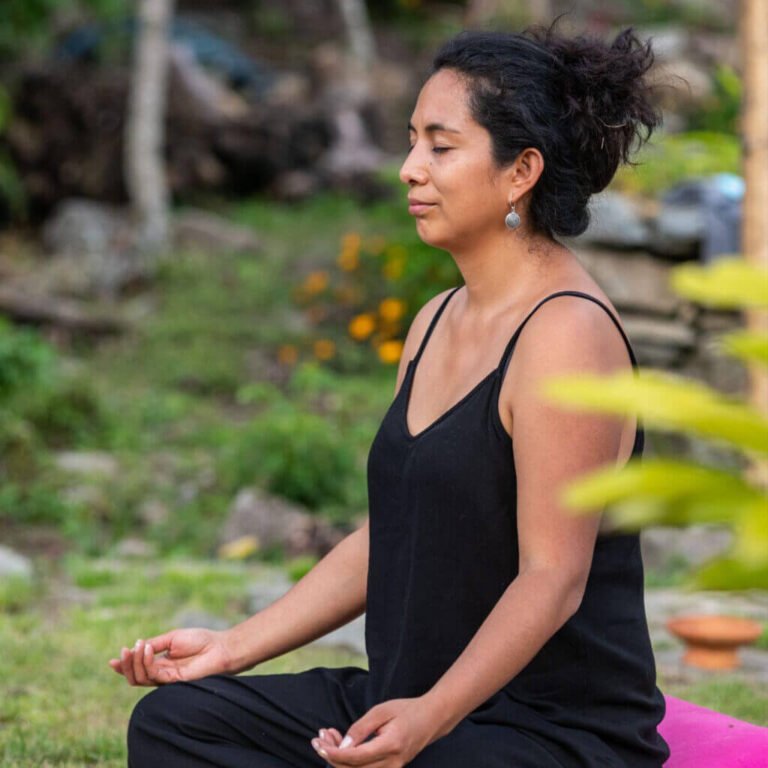Explore answers to common concerns and misconceptions surrounding guided meditation. Discover how this practice caters to beginners, tackles wandering minds, and accommodates various beliefs. Gain insights and clarity to enhance your meditation journey.
Introduction to Guided Meditation
Guided meditation is a powerful tool for enhancing mental clarity, emotional well-being, and inner peace. Understanding its essence and benefits is crucial for embarking on a fulfilling journey of self-discovery and growth.
Understanding the Essence of Guided Meditation:
- Guided meditation involves a structured practice led by a trained instructor or through recorded audio sessions.
- It combines relaxation techniques, visualization, and mindfulness to guide practitioners into deep relaxation and heightened awareness.
- The guidance helps individuals navigate their inner landscape, explore emotions, and cultivate a sense of presence and tranquility. Learn more.
Benefits of Incorporating Guided Meditation into Daily Routine:
- Stress Reduction: Guided meditation alleviates stress by promoting relaxation and calming the nervous system.
- Enhanced Focus and Clarity: Regular practice enhances mental clarity, concentration, and cognitive function, improving productivity and decision-making.
- Emotional Regulation: Guided meditation fosters self-awareness and emotional intelligence, helping individuals manage emotions more effectively and respond to life’s challenges more resiliently.
- Better Sleep: Guided meditation sessions before bedtime can promote relaxation and improve sleep quality, leading to more restful and rejuvenating sleep cycles.
- Increased Self-Compassion: Through gentle guidance and self-reflection, guided meditation encourages self-compassion and fosters a deeper connection with oneself and others.
Getting Started with Guided Meditation
Embarking on the guided meditation journey begins with laying the foundation for a conducive practice environment and selecting the right program that resonates with individual preferences and goals.
- Creating the Ideal Meditation Environment:
- Find a quiet and comfortable space free from distractions where you can sit or lie down comfortably.
- Set the ambiance with soft lighting, calming scents, and soothing music or nature sounds if desired.
- Ensure proper posture supports relaxation and alertness, whether sitting on a cushion or chair or lying down with appropriate spinal alignment.
- Consider incorporating props such as blankets or cushions to enhance comfort and relaxation.
- Selecting the Right Guided Meditation Program:
- Explore a variety of guided meditation programs available through apps, websites, or local classes.
- Consider factors such as the duration of sessions, meditation style (e.g., mindfulness, visualization), and the instructor’s voice and guidance style.
- Experiment with different programs to find one that resonates with your preferences, goals, and experience level.
- Pay attention to user reviews and testimonials to gauge the effectiveness and suitability of a particular program for your needs. Learn more.

Techniques and Practices in Guided Meditation
Mindfulness Meditation: Cultivating Present-Moment Awareness
- Mindfulness meditation involves focusing on the present moment and cultivating awareness of thoughts, feelings, bodily sensations, and the surrounding environment.
- Techniques may include focusing on the breath, observing bodily sensations, or simply being aware of the thoughts passing through the mind without judgment.
- Benefits include reduced stress, improved concentration, and enhanced emotional well-being.
Visualization Meditation: Harnessing the Power of Imagination
- Visualization meditation utilizes the power of imagination to create vivid mental images or scenarios that promote relaxation, healing, or personal growth.
- Practitioners often visualize themselves in peaceful settings, achieving goals or overcoming challenges, engaging all senses to enhance the experience.
- Benefits include increased confidence, enhanced creativity, and greater clarity and purpose.
Body Scan Meditation: Deepening Body-Mind Connection
- Body scan meditation systematically directs attention to different body parts, starting from the toes and gradually moving to the head.
- Practitioners observe sensations, tensions, or areas of discomfort without judgment, allowing for deep relaxation and a heightened awareness of the body-mind connection.
- Benefits include stress reduction, improved physical awareness, and a greater sense of embodiment and presence in the moment. Learn more.
Exploring Different Guided Meditation Themes
Stress Relief and Relaxation: Finding Calm Amidst Chaos
- Stress relief and relaxation-guided meditations aim to calm the mind, relax the body, and alleviate tension accumulated from daily stressors.
- Deep breathing exercises, progressive muscle relaxation, and guided imagery may promote calm and inner peace.
- Benefits include reduced anxiety, improved sleep quality, and a more remarkable ability to cope with life’s challenges.
Sleep Meditation: Drifting into Deep, Restorative Sleep
- Sleep meditation focuses on preparing the mind and body for restful sleep by promoting relaxation and easing bedtime anxieties.
- Guided meditations often include gentle breathing exercises, body scan techniques, and soothing visualizations to facilitate a smooth transition into sleep.
- Benefits include improved sleep onset, enhanced sleep quality, and feeling refreshed and rejuvenated upon waking.
Self-Compassion and Self-Love: Nurturing Inner Harmony
- Self-compassion and self-love guided meditations encourage cultivating kindness, acceptance, and understanding towards oneself.
- Practices may involve loving-kindness meditation, affirmations, and gratitude exercises to foster a more profound sense of self-worth and inner harmony.
- Benefits include increased self-esteem, greater resilience in the face of challenges, and stronger connections with others through empathy and compassion.
Overcoming Challenges in Guided Meditation
Dealing with Restless Thoughts and Distractions: Guided meditation offers a pathway to inner peace and tranquility, but it’s not uncommon to encounter restless thoughts and distractions. Here are some strategies to help you navigate through these challenges:
- Acknowledge and Accept: Recognize that having wandering thoughts is a natural part of the meditation process. Instead of fighting against them, acknowledge their presence and gently guide your focus to the meditation practice.
- Focus on the Present Moment: Redirect your attention to the present moment by anchoring yourself to your breath or the sensations in your body. By focusing on what is happening here and now, you can minimize the impact of distracting thoughts.
- Use Guided Meditation Techniques: Leverage the guidance provided in your meditation practice. Follow the instructions of the guided meditation teacher, allowing their voice to lead you back to a state of Calm and focus whenever your mind starts to wander.
- Cultivate Non-Judgmental Awareness: Approach distractions with curiosity and nonjudgment. Instead of viewing them as obstacles, see them as opportunities for self-awareness and growth. Observing your thoughts without attaching meaning or significance can cultivate a greater inner peace.
Patience and Persistence: Embracing the Journey of Inner Exploration: Embarking on a journey of inner exploration through guided meditation requires patience and persistence. Here’s how you can cultivate these qualities to deepen your meditation practice:
- Set Realistic Expectations: Understand that meditation is a skill that develops over time. Avoid placing unrealistic expectations on yourself or your practice. Instead, embrace each meditation session as an opportunity for learning and growth.
- Celebrate Small Wins: Acknowledge and celebrate your progress, no matter how small it may seem. Whether it’s maintaining focus for a few seconds longer or experiencing a moment of clarity, every step forward is a testament to your dedication and effort.
- Embrace Imperfection: Let go of the need for perfection in your meditation practice. Accept that there will be days when your mind feels more restless or distracted than others, and that’s okay. Approach each session with a sense of openness and curiosity, embracing whatever arises with compassion and understanding.
- Stay Committed: Consistency is key to meditation. Commit to practicing regularly, even on days when you don’t feel like it. Remember that the benefits of meditation often unfold gradually over time, so stay committed to your practice, trusting that your efforts will yield results. Learn more.
Integrating Guided Meditation into Daily Life
Establishing a Consistent Meditation Practice: Integrating guided meditation into your daily life requires establishing a consistent practice. Here are some tips to help you make meditation a regular part of your routine:
- Set Aside Dedicated Time: Schedule specific times for meditation each day, whether first thing in the morning, during your lunch break, or before bed. Treat these sessions as non-negotiable appointments with yourself, prioritizing them as you would any other important commitment.
- Start Small: If you’re new to meditation or struggling to find time, start with shorter sessions and gradually increase the duration as you build your practice. Even a few minutes of meditation daily can significantly impact your overall well-being.
- Create a Sacred Space: Designate a quiet, comfortable space in your home where you can meditate without distractions. Whether it’s a cozy corner of your bedroom or a dedicated meditation room, having a designated space can help signal to your mind that it’s time to unwind and focus inward.
- Experiment with Different Times: Be open to experimenting with different times of day to meditate and see what works best for you. Some people find that meditating in the morning helps set a positive tone for the day, while others prefer to unwind with meditation in the evening to relax and de-stress before bed.
Applying Mindfulness Beyond Meditation Sessions: The benefits of guided meditation extend far beyond the time spent on the cushion. Here are some ways to incorporate mindfulness into your daily life:
- Practice Mindful Awareness: Bring mindful awareness to everyday activities such as eating, walking, or washing dishes. Pay attention to the sensations, thoughts, and emotions that arise each moment, cultivating a greater sense of presence and appreciation for the simple joys of life.
- Use Mindful Reminders: Set daily reminders to check in with yourself and bring attention to the present moment. Whether it’s a gentle chime on your phone or a sticky note on your desk, these reminders can help you stay grounded and connected amidst the busyness of daily life.
- Cultivate Gratitude: Take time each day to reflect on what you’re grateful for. Whether it’s a beautiful sunrise, a kind gesture from a friend, or a moment of peace, cultivating gratitude can shift your perspective and enhance your overall well-being.
- Practice Compassion: Extend kindness and compassion to yourself and others throughout the day. Notice when you’re being self-critical or judgmental; instead, offer yourself words of encouragement and support. Similarly, look for opportunities to extend kindness to those around you, fostering connection and empathy in your relationships. Learn more.

Resources and Tools for Guided Meditation
Recommended Meditation Apps and Websites: In the digital age, countless resources are available to support your guided meditation practice. Here are some recommended apps and websites to explore:
- Headspace is a popular meditation app that offers guided meditation sessions tailored to different needs and preferences, including stress relief, sleep, and focus.
- Calm: Known for its soothing guided meditations, Calm offers a variety of mindfulness practices, breathing exercises, and sleep stories to help you relax and unwind.
- Insight Timer: With a vast library of guided meditations led by experienced teachers worldwide, Insight Timer offers something for everyone, whether a beginner or a seasoned meditator.
- YouTube: Explore the wealth of guided meditation videos available on YouTube, covering various topics and techniques. You will find something that resonates with you, from body scan meditations to visualization exercises.
Exploring Guided Meditation Audio Tracks and Scripts: Besides apps and websites, plenty of guided meditation audio tracks and scripts are available for free or purchase. Here are some places to look:
- Online Meditation Communities: Join online meditation communities or forums where members share their favorite guided meditation resources and recommendations.
- Local Meditation Centers: Check out local meditation centers or yoga studios in your area, as they often offer guided meditation classes and workshops led by experienced instructors.
- Books and CDs: Explore books and CDs on guided meditation available at your local bookstore or library. These resources may include guided meditation scripts and audio tracks to support your practice at home.
- Personalized Guided Meditations: Consider working with a meditation teacher or therapist to create personalized guided meditation recordings tailored to your needs and goals.
Exploring these resources and tools can enhance your guided meditation practice and deepen your self-discovery and inner exploration journey. Whether you’re dealing with challenges like restless thoughts and distractions or seeking to integrate mindfulness into your daily life, a wealth of support is available to help you along the way.
Frequently Asked Questions about Guided Meditation
Addressing Common Concerns and Misconceptions:
- Is guided meditation suitable for beginners?
- Yes, guided meditation is perfect for beginners. It provides step-by-step instructions and support from a trained guide, making it easier to dive into the practice.
- Can I practice guided meditation even if I can’t sit still for long periods?
- Absolutely! Guided meditation allows for flexibility in posture, so you can choose a comfortable position that suits you, whether sitting, lying down, or even walking.
- Will my mind wander during guided meditation?
- It’s entirely normal for the mind to wander during meditation. The key is not to judge yourself for it but to gently guide your focus to the present moment using the guidance provided.
- Are there religious connotations associated with guided meditation?
- Individuals of any faith or belief system can practice guided meditation. It focuses on mindfulness and relaxation techniques rather than specific religious practices.
Tips for Enhancing the Guided Meditation Experience:
- Create a Relaxing Environment: Find a quiet space free from distractions, dim the lights, and consider using candles or essential oils to create a calming atmosphere.
- Use headphones or earbuds during guided meditation sessions to block out external noise and immerse yourself fully in the experience.
- Experiment with Different Guides: Explore various guided meditation instructors to find one whose voice and style resonate most with you. Personal preference plays a significant role in enhancing your meditation experience.
- Set Realistic Expectations: Meditation is a practice, and having good and bad days is normal. Be patient with yourself and celebrate small victories along the way. Learn more.

Final words: Embrace Tranquility through Guided Meditation
Reflecting on Personal Growth and Transformation:
Embracing guided meditation opens doors to profound personal growth and transformation. Through regular practice, individuals cultivate resilience, emotional intelligence, and a deeper understanding of themselves. As they journey inward, they often discover newfound clarity, purpose, and a sense of inner peace that radiates into every aspect of their lives.
Encouragement for Continued Practice and Exploration:
The path of guided meditation is a lifelong journey filled with endless opportunities for growth and exploration. As you continue to nurture your practice, remember to be gentle with yourself, celebrate your progress, and remain open to the limitless possibilities. Whether you’re just beginning or have been practicing for years, know that each moment spent in meditation brings you closer to a state of profound tranquility and inner harmony. Keep exploring, growing, and, above all, embracing the transformative power of guided meditation.



